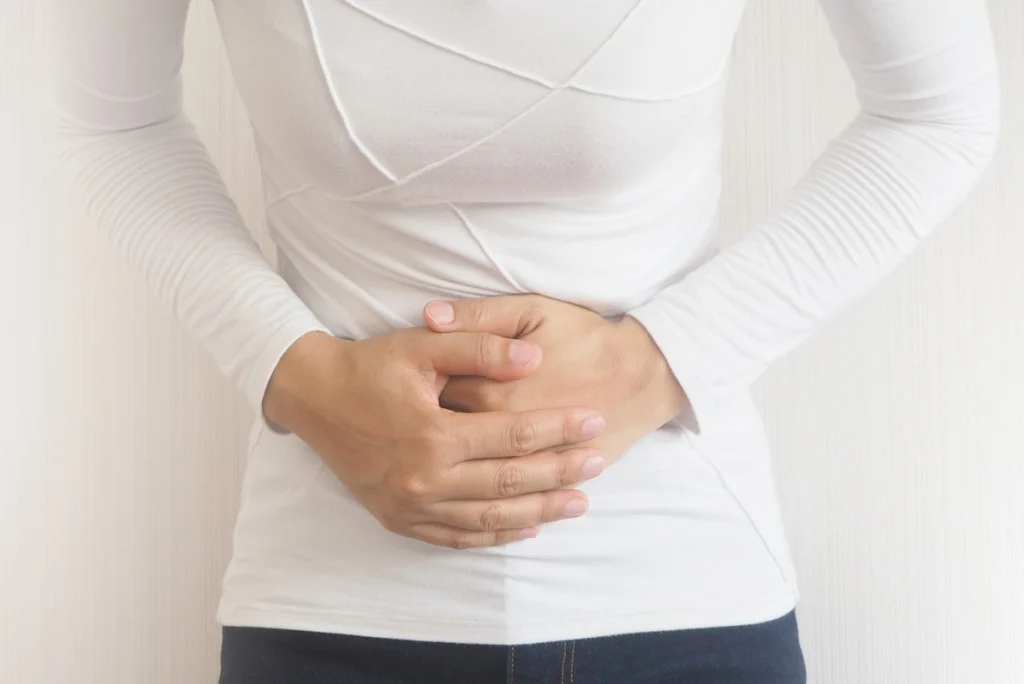Fibroids are common, and women have many options for successful treatment at Cooperman Barnabas Medical Center.

Uterine fibroids, which are noncancerous tumors that grow in the wall of the uterus, are common; about 70 percent to 80 percent of women develop fibroids by the time they reach age 50. They occur most often in women in their 40s and early 50s, but can grow during pregnancy when hormone levels are high too. Eric Liberman, D.O., director of minimally invasive gynecologic surgery at Cooperman Barnabas Medical Center (CBMC), specializes in treating fibroids using minimally invasive surgical techniques, including robotic, laparoscopic and hysteroscopic surgery. Here, he answers questions about fibroids and treatment options available at CBMC.
What are uterine fibroids?
Uterine fibroids are growths in the smooth muscle of the uterus and are almost always benign, or non-cancerous. They can range in size from 1 millimeter up to grapefruit-sized tumors that can weigh up to 2 pounds or more. Some women may develop one fibroid, but most often they have multiple fibroids.
What causes them?
The exact cause is unknown. However, there is a hormonal component with estrogen and progesterone, and we believe there is also a genetic component — they run in families. They tend to grow during pregnancy, when hormone levels are high, and often stop growing after menopause.
What are the most common symptoms?
The most common symptom is bleeding, which can be heavy and cause anemia. Other symptoms include pelvic pain or pressure, bloating, pain during intercourse and increased frequency of urination if a fibroid is pressing on the bladder. However, some women have no symptoms.
Fibroids are also a common cause of fertility issues, making it difficult for women to get pregnant or maintain pregnancies. In rare cases, they can compress blood vessels and lead to blood clots in legs, but that’s often only when they get very large.
How are fibroids treated?
Medications may be used as first line management to address the heavy menstrual bleeding caused by the fibroids, such as birth control pills and other medications that alter estrogen and progesterone levels. If medications are ineffective or symptoms are not alleviated, we consider minimally invasive surgical options. Recommended options are always tailored to the individual patient. The location and number of fibroids along with whether or not the patient wants to get pregnant in the future guides treatment. These may range from hysteroscopic fibroid resection to robotically assisted removal of the fibroids or robotic hysterectomy. Another option may include uterine fibroid embolization, performed by an interventional radiologist, if the patient meets certain criteria.
What is a hysteroscopy?
Hysteroscopic procedures—inserting a camera into the uterus and removing the fibroid, much like colon polyps are removed during colonoscopy—are utilized if fibroids are partially or fully within the cavity of the uterus. Fibroids within the uterine cavity are often associated with bleeding and fertility problems. Fibroids that are deeper in the muscle of the uterus and can’t be reached hysteroscopically are often managed robotically or, if needed, through a larger open surgery.
What is the recovery like?
With hysteroscopic surgery, patients go home the same day. They’ll need to take it easy for a few days before returning to normal activities, and they may experience light bleeding for a week or so. Laparoscopic and robotic surgery is also same-day surgery, and recovery takes about two weeks. With larger incisions, patients often go home the next day, and recovery can take three to four weeks.
Are there new treatments available for fibroids?
Yes, and Cooperman Barnabas Medical Center is one of the few hospitals in New Jersey to offer it. It is called V-NOTES, for vaginal natural orifice transluminal endoscopic surgery. This is a laparoscopic procedure that is done through the vagina, so there are no cuts on the abdomen. As surgeons, we can do more complex procedures through the vagina. And it’s better for patients because the recovery is quicker and it’s better cosmetically, with no wounds or scars.
What would you like women to know about fibroids and their treatment?
I want women to understand that up to about 80 percent of women have fibroids by the age of 50, but many treatment options are available and it’s not necessary to suffer. Come see us if you think you might have uterine fibroids.
To learn more about gynecologic surgery at Cooperman Barnabas Medical Center, call 973.243.9300.